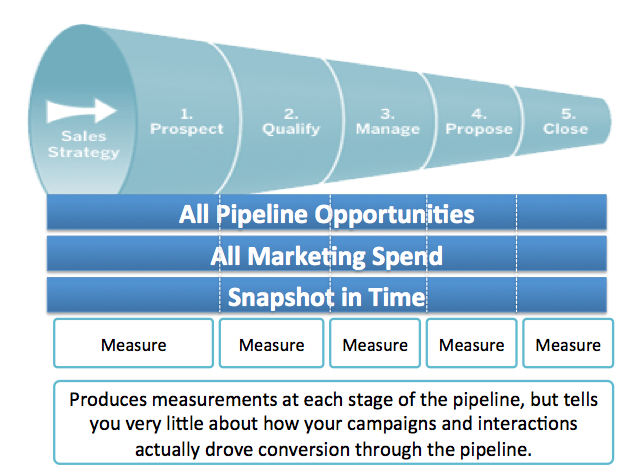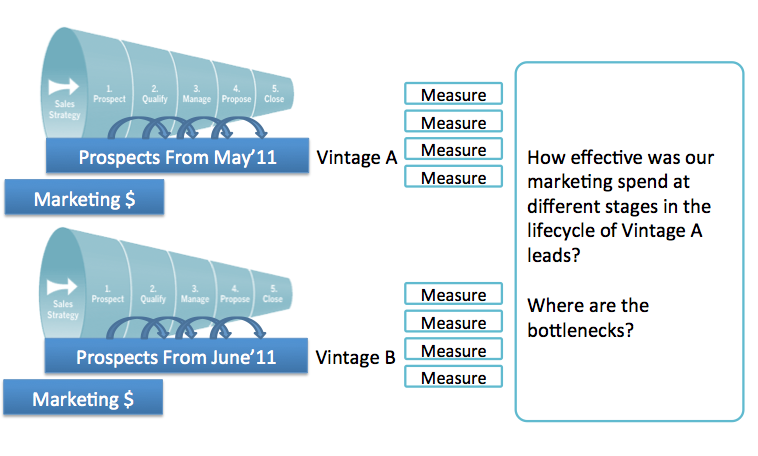How Your Closed Prospects Are Like The Vintage On A Fine Wine
- Written by Demand Gen Report Team
- Published in Demanding Views
By Ian Michiels, Principal Analyst, Gleanster Research
 In wine-making a vintage wine is one that is made from grapes that were all, or primarily, grown and harvested in a single year.
In wine-making a vintage wine is one that is made from grapes that were all, or primarily, grown and harvested in a single year.
The quality of a vintage is contingent on a number of different factors; location, weather, plant maturity, soil conditions, and the aging process. In some years, these factors combine to create a uniquely high quality wine. The prospects that seed top-line growth in a BtoB environment are nurtured and developed through a similar process, which also demand a unique combination of factors before they mature into a closed sale; the quality of marketing content, the relevance of marketing messages, where messages are consumed, when messages are consume, and the sales engagement process have a direct impact on the final outcome – the lifetime value of the customer relationship.

The interactions a prospect has with marketing and sales dictates how soon the prospect will produce a product (a sale), the quality of that product (the average order value) and whether or not that product get’s better over time (retention). The question is how can organizations control and influence the buying and sales cycle to maximize revenue and close more business? Automation through lead nurturing (see the Gleanster benchmark report on Lead Nurturing) mitigates some of the challenge. Lead nurturing can help qualify prospects and prepare them for more meaningful interactions with sales. But, finding the unique combination of content, channel, and messaging is no easy task. It requires a very robust measurement and analytical process. In fact, lack of measurement and optimization across the lead lifecycle makes it nearly impossible to control the quality and quantity of revenue that is produced. How do you know which marketing messages are most effective at converting prospects to the next stage? How do you know if your marketing budget is being allocated appropriately across channels?
The Emergence of Revenue Performance Management (RPM) and a Gaping Void in Lead Lifecycle Optimization
Revenue Performance Management (RPM) recently emerged as a new term to define marketing automation, lead management, and demand generation. I am a big fan of this term because it represents a great way to articulate what these technologies have been trying to do all along – manage revenue (to learn more about my thoughts on RPM, check out this Deep Dive: Revenue Performance Management – The Sales and Marketing Playbook Finally Has a Name”). Gleanster defines RPM as the process by which organizations maximize revenue through data driven decisions that align sales and marketing, create highly relevant interactions with potential buyers, and establish repeatable metrics for ongoing optimization of the lead lifecycle; across marketing, sales and service.

So, what does RPM have to do with vinification and lead lifecycle optimization? Stay with me. RPM is uniquely different from traditional lead management tactics because the approach stresses the importance of measurement and optimization. It’s about applying analytical data driven decisions to optimize your sales pipeline. But here’s the kicker. Most organizations still struggle to gain visibility into pipeline performance – even when they are using a lead management tool. In fact, according to Gleanster Research, 8 out of 10 organizations report “no ability to make data driven decisions’ at the early stages in the prospect buying cycle. That means most of us don’t even know the critical factors that are producing quality sales at the end of the funnel. Therefore, for most organizations, it’s VERY difficult to truly manage revenue performance. In this environment, RPM becomes less of a tactic, and more of a conceptual framework.
Taken a step farther, the vintage analogy actually uncovers one of the most glaring and fundamental flaws in today’s lead management processes. Even when lead nurturing is applied to the buying cycle through drip-campaigns or trigger campaigns, the measurement process for defining the benefit of these campaigns is often flawed. Instead of measuring the lead lifecycle from a point of origin (as an inquiry to a closed sale for example), most companies measure the lead lifecycle (if at all) by sales cycle stages. There’s no link between the nurture marketing tactics (marketing spend) and sales. These metrics only tell you that at any given time for any given population of respondents, here’s how many are in the pipeline. But you can’t really make that actionable to optimize the process. You can benchmark it, and measure it over time for trend analysis, but it doesn’t tell you how effective your marketing and sales were at driving conversion through the sales pipeline and that’s the goal. We really want to know what the unique combination of factors were that produced the best vintage of revenue for any given time period.
Here’s why the vintage concept is so important. The “vintage” of the lead accounts for the overall performance of that lead over its entire lifecycle. It’s about evaluating the impact of marketing spend on different stages of the lead lifecycle. This allows for a much richer analysis of actionable strategies that can impact the sales pipeline. A revenue vintage will tell you how effective your marketing spend was at different stages in the lead lifecycle.
In reality, the vintage process is pretty difficult to measure with today’s “RPM” solutions. They can manage the interactions within each stage quite well, but they don’t do a great job automating the analytical analysis that tells you how leads actually converted within the pipeline. Over the past 9 months, research from 600+ B2B sales and marketing leaders revealed some Top Performing organizations are actually trying to get to this level of granularity. The biggest challenge of course is the fact that in many cases prospect interactions happen across different channels, so the data doesn’t necessarily exist in one system. One Top Performer was taking data from a lead management solution, web analytics, and web content management and pushing it into a Business Intelligence solution to try to identify conversion across the customer lifecycle. This should be a wake-up call for RPM providers. If you can crack the code on automating lifecycle analytics, you can truly automate better decisions to produce higher quality vintages of revenue.
Give It a Shot
The difficulty with this concept is leads might flow inadvertently over time through a variety of channels. It’s impossible to group them or measure each lead independently without rigorous measurement. But you could apply the concept as a litmus test for the effectiveness of different combinations of marketing campaigns. Take a sample population (perhaps derived from a tradeshow or a webinar) and mark them as a vintage. Analyze them for a period of time and document the marketing spend for each interaction along with the revenue that is produced at the end of the process. Who knows, perhaps there’s an emerging role for BtoB Lead Lifecycle Sommelier’s… I’ll ponder that over a nice glass of 2005 Napa Cab.

